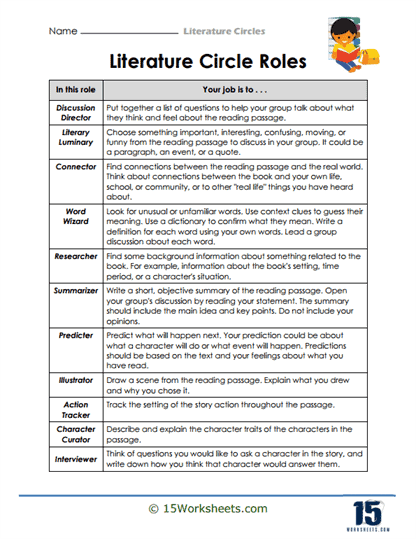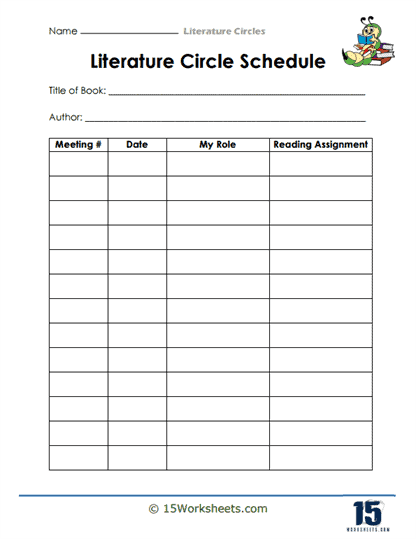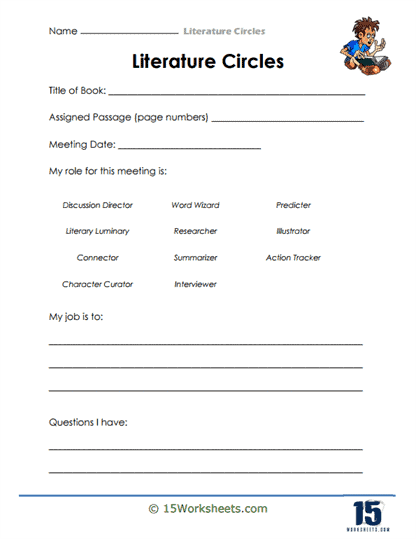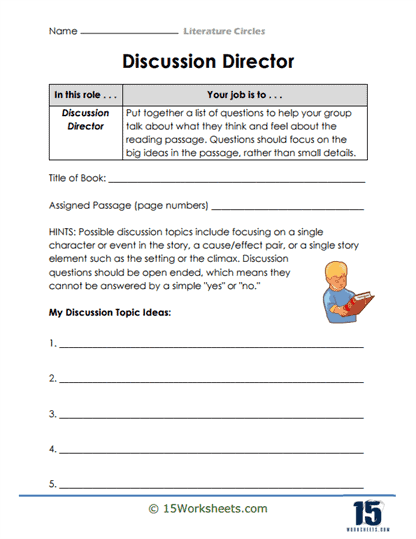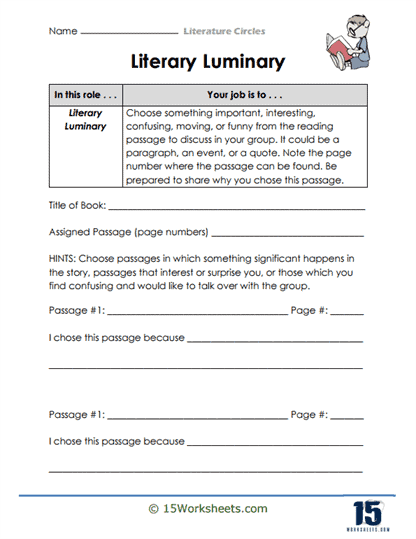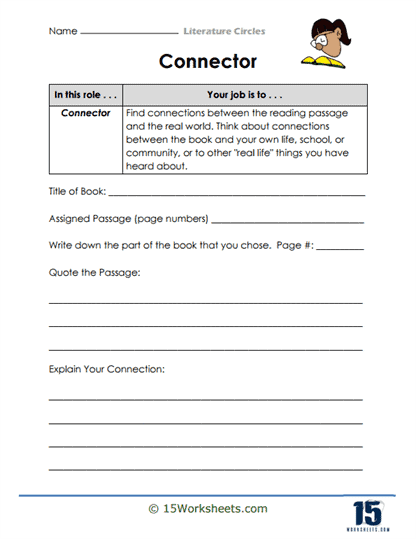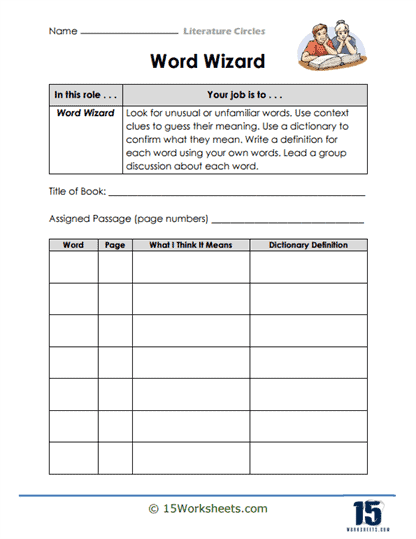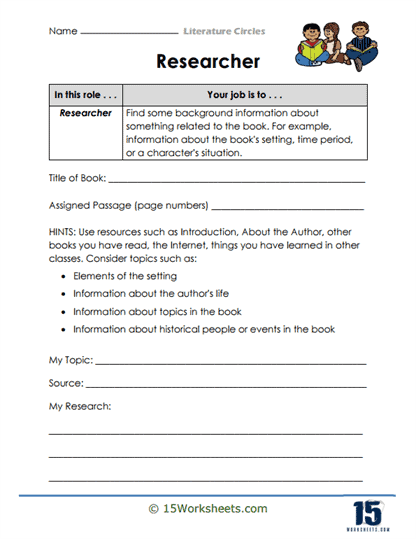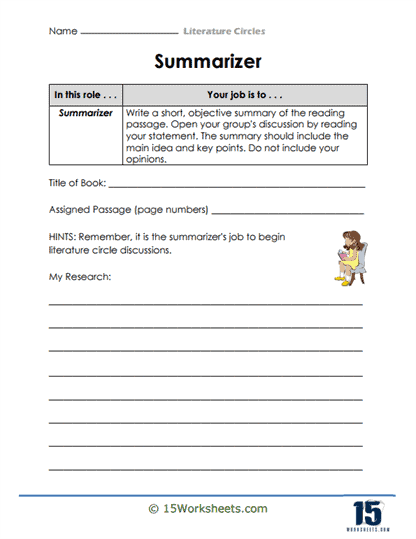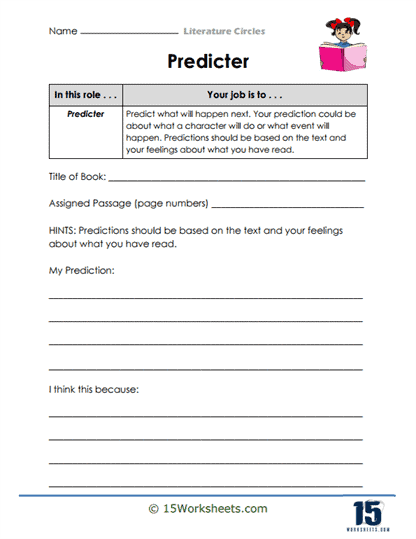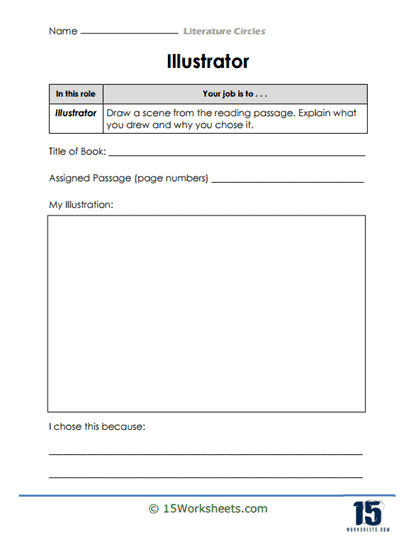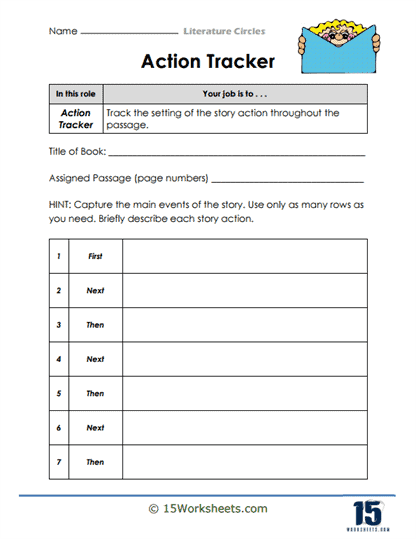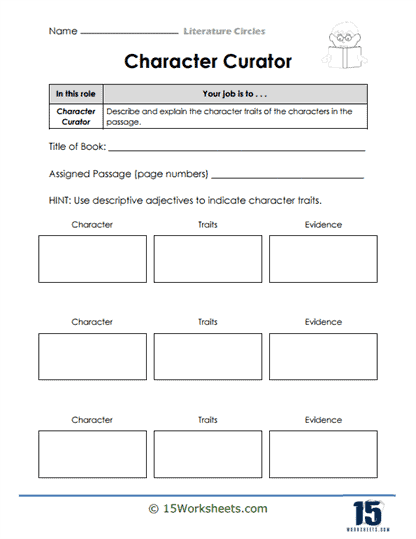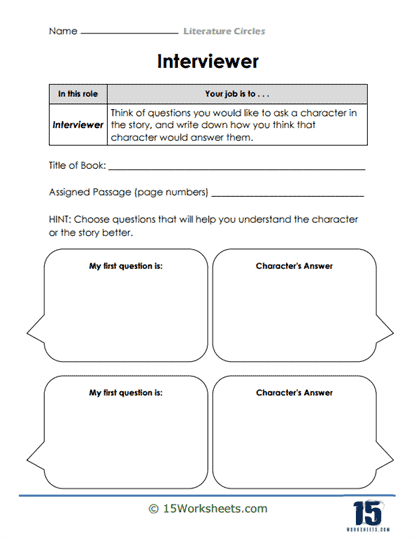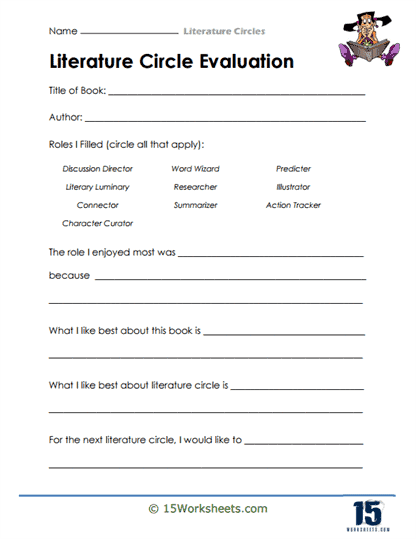Literature Circles Worksheets
All About These 15 Worksheets
Literature circles are a dynamic and collaborative approach to reading and discussing literature in the classroom. This Literature Circles Worksheets Collection is a versatile resource designed to engage students in in-depth literary analysis and meaningful dialogue.
This collection comprises 15 meticulously crafted worksheets, each tailored to facilitate literature circle discussions on various aspects of a book. In this description, we will explore the importance of literature circles and the multitude of benefits they offer to students.
What are Literature Circles?
Literature circles are a collaborative and student-centered approach to teaching and learning in which small groups of students come together to read, discuss, and analyze a piece of literature. They are commonly used in educational settings to promote active reading, critical thinking, and engagement with the text while encouraging students to take responsibility for their own learning. Literature circles foster a supportive environment for students to express their ideas, ask questions, and share their interpretations of the text.
In a literature circle, each student typically assumes a specific role or responsibility during the discussion. These roles may include:
- Discussion Director – Guides the conversation by posing open-ended questions that encourage group members to think critically and share their thoughts about the text.
- Summarizer – Provides a brief summary of the assigned reading, highlighting the main events, ideas, or themes.
- Connector – Makes connections between the text and personal experiences, other texts, or relevant issues and events.
- Vocabulary Enricher – Identifies and defines unfamiliar or challenging words and phrases from the text, helping to clarify meaning and enhance understanding.
- Illustrator – Creates visual representations (drawings, diagrams, or charts) to support and enhance the group’s understanding of the text.
- Literary Luminary – Identifies and discusses significant passages, quotes, or literary devices within the text that contribute to the overall meaning, theme, or impact of the work.
These roles may vary depending on the specific goals of the literature circle or the teacher’s preferences. Students often rotate roles as they progress through the text, allowing each individual to contribute to the group’s understanding in different ways.
Literature circles can be adapted to various grade levels and can be used with a wide range of texts, including novels, short stories, poems, or nonfiction works. They provide a flexible and engaging framework for students to deepen their understanding of literature while developing essential communication, collaboration, and critical thinking skills.
How to Use Literature Circles in Your Class
Using literature circles in your class can be an effective way to engage students in active reading and meaningful discussions. To implement literature circles, follow these steps:
- Choose Appropriate Texts – Select a variety of texts that are relevant to your curriculum, grade level, and students’ interests. You can use novels, short stories, poems, or nonfiction works. Consider offering multiple choices so that students can select a text that appeals to them, or use a common text for the entire class.
- Form Groups – Divide your students into small groups, ideally consisting of 4-6 members. Groups can be formed based on students’ reading levels, interests, or other criteria, but try to create a mix of abilities and perspectives within each group.
- Assign Roles – Introduce the various roles (Discussion Director, Summarizer, Connector, Vocabulary Enricher, Illustrator, and Literary Luminary) and explain their responsibilities. Assign each student a role, either randomly or based on their strengths and preferences. Encourage students to take on different roles as the literature circle progresses to ensure that everyone has an opportunity to contribute in various ways.
- Establish a Schedule – Set a reading schedule that outlines which sections of the text will be discussed during each literature circle meeting. Make sure to allow enough time for students to read, prepare for their roles, and participate in the discussions.
- Model the Process – Before beginning the literature circles, conduct a demonstration with the entire class to model the expectations and procedures. You can use a short passage or excerpt from one of the selected texts to demonstrate how each role contributes to the discussion.
- Facilitate Discussions – During literature circle meetings, circulate among the groups to listen, observe, and provide guidance as needed. Encourage students to ask open-ended questions, share their insights, and respect the opinions of others. Remember that your role as a teacher is to facilitate the discussions, not dominate them.
- Assess and Provide Feedback – Use a variety of assessment methods to evaluate students’ participation, preparation, and contributions to the literature circle discussions. Offer constructive feedback to help students improve their performance in their roles and deepen their understanding of the text.
- Reflect and Adjust – After each literature circle session, encourage students to reflect on their experiences and discuss any challenges or successes they encountered. Use this feedback to adjust the process and make improvements for future literature circles.
- Extend the Learning – To further enrich students’ learning, consider incorporating related activities, such as writing assignments, creative projects, or research tasks that connect to the themes or topics explored in the texts.
- Celebrate Success – At the end of the literature circle experience, celebrate your students’ achievements by recognizing their hard work and contributions to the discussions. This can be done through verbal praise, certificates, or a showcase of the students’ work and insights gained during the literature circle process.
Remember that literature circles should be a flexible and adaptable approach to teaching and learning. Be open to making adjustments and modifications to best meet the needs and interests of your students, while fostering a love of reading and promoting meaningful conversations about literature.
These worksheets empower students to embark on a collective journey of literary exploration and analysis. Beyond enhancing their comprehension of the text, these worksheets foster critical thinking, collaboration, and a deep appreciation for the art of literature.
As students engage in literature circles, they not only develop their analytical skills but also become active participants in their own learning. They learn to express their ideas, listen to others, and construct meaning collaboratively. These skills prepare them not only for academic success but also for effective communication, teamwork, and a lifelong love of literature.
Empower your students to explore literature together with enthusiasm, becoming not only well-read individuals but also more critical thinkers, skilled communicators, and appreciators of the beauty of storytelling. Unlock the doors to collaborative exploration and literary discovery, one discussion at a time, and watch as your students become more engaged, enlightened, and enthusiastic learners.

